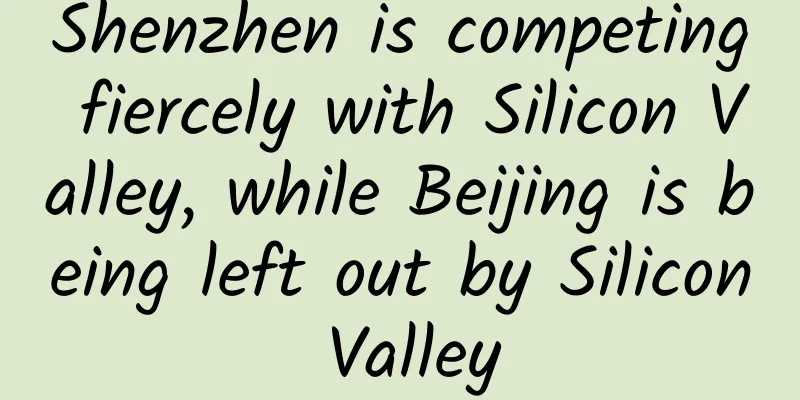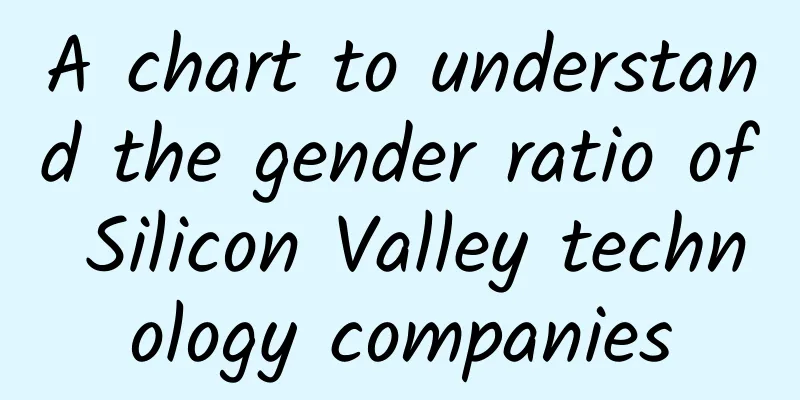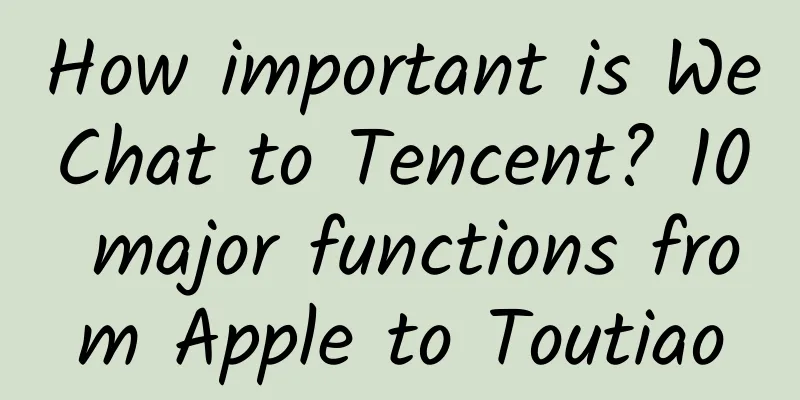Shenzhen is competing fiercely with Silicon Valley, while Beijing is being left out by Silicon Valley

|
Editor's note: With the emergence of smart hardware, the technology center is increasingly moving towards Shenzhen. If Beijing and Silicon Valley are isolated and even conflicted to some extent due to the differences in their entrepreneurial cultures that have been formed over a long period of time, Silicon Valley and Shenzhen can be well integrated. Will Shenzhen be the next Silicon Valley?
Last year, a group of MIT Media Lab students visited Shenzhen. The organizer of this event was Joi Ito, the media director of MIT Lab. They were accompanied by Bunnie, the famous hardware hacker who hacked Xbox, Reid Hoffman, the founder of LinkedIn, and Marty Schmidt, the provost of MIT. In a memoir by Joi Ito, "Shenzhen Hardware Manufacturing Industry in the Eyes of an MIT Scholar," he said that he visited injection molding factories, PCB factories, factories that embed chips on circuit boards... hardware markets like Huaqiangbei and companies like DJI, and was completely shocked. Finally, he said that in Shenzhen, they experienced a complete ecosystem and low-cost labor. They have built Shenzhen into a state-of-the-art world-class manufacturing base. This ecosystem consists of a large number of factories and manufacturing technologies that can produce hardware products of various sizes. In fact, it is not just Joi Ito and Reid Hoffman who are attracted by this complete ecological chain system. Some foreign entrepreneurs who make smart watches, smart hats and smart speakers said that last year they flew back and forth between Shenzhen and Silicon Valley, visiting Shenzhen twice a year to stay for a while, but this year, they simply set up offices in Shenzhen. In fact, in addition to them, their friends are also having closer and closer ties with Shenzhen and looking for factory hubs in China. You will find that the relationship between Shenzhen and Silicon Valley is becoming more and more "ambiguous", whether it is ordinary makers or academic institutions and governments. You can feel this from some official and unofficial events held in Shenzhen. Maybe one day you will meet a professor from the University of California, Berkeley, the director of the Institute of the Future, or a partner of the world's largest hardware accelerator HAXLR8R at an event. At the Second Shenzhen Industrial Design Exhibition and Android Forum last month, in addition to maker representatives from all over the world, Silicon Valley academic institutions, hardware startups representative Chris Andressen, and MIT Fablab Director Neil also appeared at the venue. The latter even came to Shenzhen in November for Fab Lab. Also present were MIT Bit and Yard Research Center Project Manager Sherry Lassiter, MIT Assistant Researcher Nadyd Peed and MIT Fab 12 Authorization Specialist David Jin. After attending a small discussion event held by the Industrial Design Association and meeting some of Shenzhen's more representative hardware startups and maker spaces, this group of people took part in talks with the government and eventually set up the Fab Lab 2.0 open innovation laboratory in Shenzhen. The machine manufacturing machine that Neil mentioned, that is, the upgraded version of Fab Lab 2.0, was finally scheduled to be held in Shenzhen in 2016. On the other hand, Shenzhen is infiltrating Silicon Valley. On January 5, 2015, because both places want to promote business integration through the government level, the governments of both places will jointly hold an event in Silicon Valley, and the mayors of both places will attend. In addition to the government, private enterprises are also very positive. More than 90% of Seeed's orders come from overseas, and many of them come from the United States, so it simply set up part of its production lines in Silicon Valley, USA, to better serve local companies. DJI, known as the Little Apple of Shenzhen, has set up an office in Los Angeles and is also building an office in San Francisco. Eric Cheng, who we often see in DJI's promotional videos, is responsible for the affairs of the San Francisco office and business development in Hollywood and Silicon Valley. If you think that only world-renowned Shenzhen companies are entering Silicon Valley, you are wrong. Some low-key startups are also seeking cooperation in the US market, and their first choice is Silicon Valley companies. PingWest will hold an event in San Francisco in January titled "Five Dimensions of Smart Hardware" to help Shenzhen and Silicon Valley hardware companies connect. It can be said that Silicon Valley companies are mainly interested in Shenzhen's supply chain, while Shenzhen companies are more interested in Silicon Valley's channels, consumer markets, PR and design. Whether it is a smart breastfeeder, WiFi speaker, sleep monitor, blood pressure monitor... their founders will ask me, "The market for this thing is in the United States, so we want to go to Indiegogo or Kickstarter, can you help us find local media or PR companies?" However, in Beijing, the startup hub, we don’t see a similar phenomenon. Although there are more and more conferences where international tech giants come out to show off, you don’t see such deep and friendly cooperation. As my colleague Luo Yihang said, "If Beijing and Silicon Valley are isolated and even conflicted to some extent because of the differences in their entrepreneurial cultures that have been formed over a long period of time, Silicon Valley and Shenzhen can integrate well." On the one hand, Shenzhen is close to Silicon Valley, and the two are getting along very well, but Beijing has not been involved. But on the other hand, the relationship between Beijing and Shenzhen has never been so close and yet so delicate. The two need each other: Beijing needs Shenzhen's supply chain, and Shenzhen also cannot do without Beijing's design and marketing. Therefore, Shenzhen and Beijing have close exchanges. In addition to Nanshan A8 Music Building, which is home to a large number of companies that will move from Beijing to Shenzhen, there are also some JD.com, 360, Dianmingshijian, Unisound, etc. located in other places. In terms of quantity, the companies and employees that have flocked from Beijing to Shenzhen travel back and forth between Beijing and Shenzhen at a high frequency. However, there is a kind of hidden game and competition between them, all of which are vying for who represents China's technology and who is the "Silicon Valley of China". Beijing's attitude towards Shenzhen is that it needs it, but it also seems to be mixed with disdain. The attitude is inevitably a bit arrogant, and Shenzhen's feedback is not so enthusiastic. This can be felt from the exchanges between practitioners in Beijing and Shenzhen. The former will think that the latter can only work silently and cannot even tell stories, while the latter will think that the former only loves concepts and does not do practical things. However, they also expect to have stories of their own and crave identity recognition with certain values. Therefore, the statement that "Shenzhen also has ideals" will resonate among them and spread quickly. Once they are labeled as someone who can only work silently and cannot tell stories, has no ideals and no feelings, they are actually not happy about it, even though ideals and feelings have been overused. The relationship between Shenzhen and Silicon Valley also stems from mutual need. The government media here often describe Shenzhen as the "global maker capital" and "the paradise of hardware entrepreneurs". In addition to the PR and design that Silicon Valley must provide, Shenzhen also needs the global label that Silicon Valley has long shaped in the technology industry to help it get rid of the fixed prejudice of manufacturing factories. However, this is not just a complementarity of industrial resource value, but also a fit of two cultures. Both cities were built by "outsiders" and have an extraordinary culture of tolerance; both welcome the birth of new values and do not care much about tradition. Entrepreneurs on both sides also respect or identify with each other. From the respect and sincere praise of Silicon Valley scholars for local entrepreneurs at the Industrial Design Roundtable Forum, their passion is affirmed and responded to enthusiastically, and the two are "in love". So you can see that in various official and unofficial activities and meetings related to the "hardware paradise", Silicon Valley and Shenzhen are always the protagonists, and the two interact frequently - the only missing one is Beijing. |
<<: Xiaomi Mi 5 will be released in January, why was it released ahead of schedule?
>>: Apple's bottom line from cracking down on App ranking manipulation
Recommend
Analysis of Apple iPhone Industry Chain (Part 1)
As the most successful technology company in the ...
How to unblock a permanent ban on TikTok? Can the permanent ban on TikTok be unblocked?
Friends who have run e-commerce businesses know t...
Practical case: 3 major marketing scenarios to explain the precise delivery of APP
There are many channels for APP promotion . Today...
How to plan a marketing campaign that can create multiple values?
The World Cup craze has just passed, and problems...
A complete breakdown of Luckin Coffee’s private domain
Recently, Luckin Coffee released its financial re...
How to achieve refined operations at different stages of the product?
The job of operations is to "help products d...
The five major operational logics behind Xiaohongshu’s hit products!
When it comes to Xiaohongshu, many people still h...
There is a poison called "seven aunts and eight aunts", let's see how major brands can help you detoxify
As the year draws to a close, in addition to the ...
Guilin SEO Training: How to write the Nofollow tag? What are the impacts on SEO?
The "nofollow" tag was proposed by Goog...
Bilibili Operation: How does Bilibili operate the UP host group?
1. UP host operation strategy under the pyramid m...
Apple apologizes for iPhone slowdown, battery replacement price drops from 608 yuan to 218 yuan
[[215066]] Tencent Technology News: According to ...
In-depth analysis of short video KOL celebrities in 2019!
Among the five major video platforms, Douyin was ...
P2P products, how to build a user points system?
I have always had the idea of organizing my own...
Operational strategies for low-cost customer acquisition in the education industry!
During the epidemic, after experiencing low conve...
Liu Yao video collection (17 sets 138.39G)
Liu Yao video collection (17 sets 138.39G) Resour...









